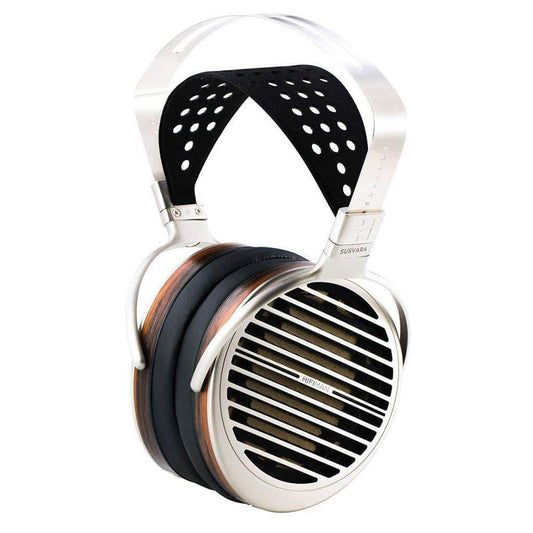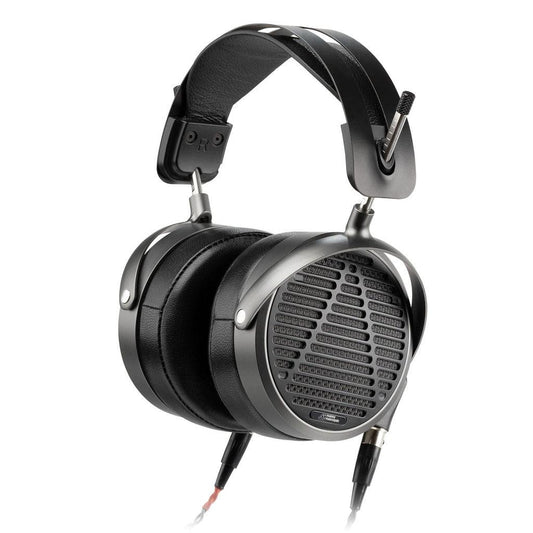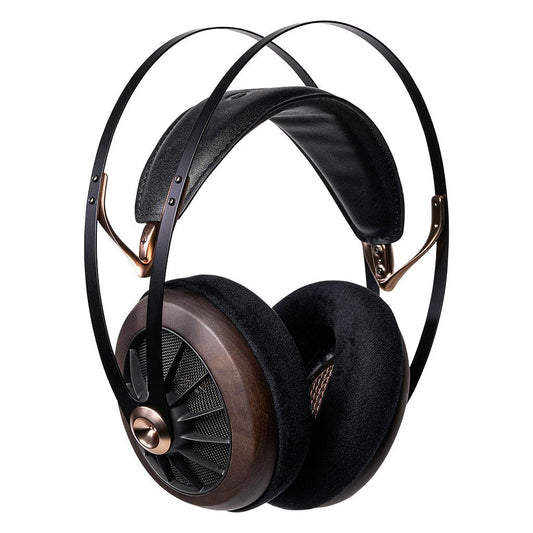Toronto Audio Fest Part 1: A Sample of Headphones
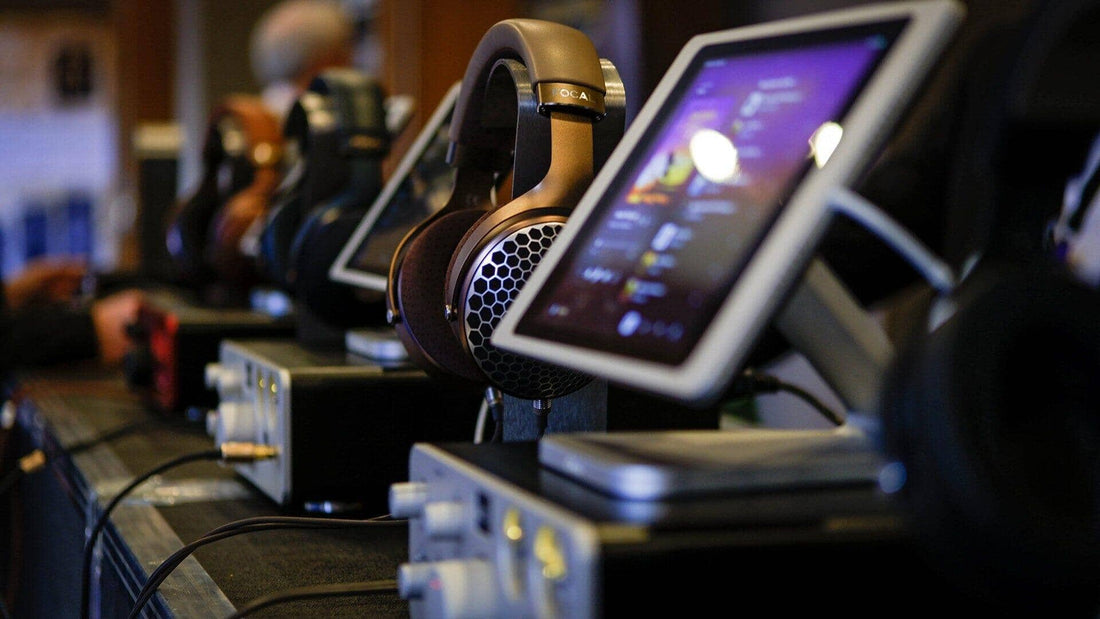
Introduction
I have never been to CanJam. Living in Canada, access to high quality audio can be hard to come by. Recently however, I heard of an event called Toronto Audio Fest from a friend in the area. I had to attend.
As it turns out, Toronto Audio Fest has actually been running for quite a while. It’s a sister event to Montreal Audio Fest, and that has been running for over 30 years! This year, Toronto Audio Fest 2022 took place on Oct 21 – 23 at the Westin Toronto Airport Hotel. Unlike CanJam, headphones are just one small part of the exhibition. Instead, the vast majority of Toronto Audio Fest was focused on 2-channel speaker systems and their associated paraphernalia. I’ll cover those in a Part 2 of this article. For today, let me tell you about my experience with trying out the few headphones on display and some of the things I learned from my first audio show.
Setting the Stage
The organizers rented out four floors of the Westin hotel, plus the basement. On the first two floors were scattered various audio booths and premier showrooms; here is where I found the headphone booths. The third and fourth floors were a maze of standard hotel rooms converted into private listening spaces, each filled with speaker from companies both familiar and foreign. The basement had only a couple exhibitions, but its showrooms were larger in scope. There were a couple of live musicians that showed up in a few of the rooms to play short pieces in accompaniment with the speakers behind them. Imagine my surprise when a harpist appeared!
A Word on Impressions
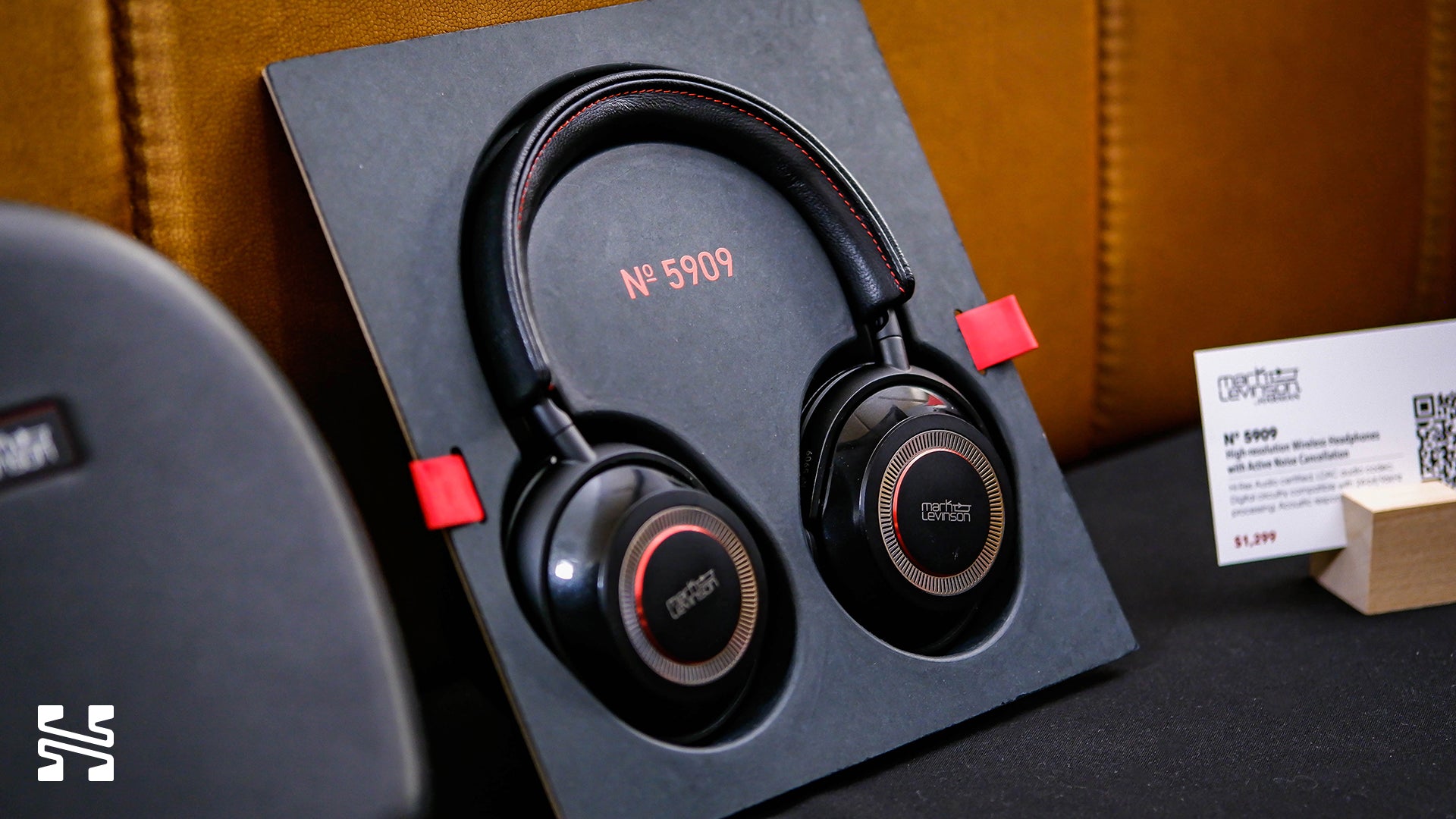
Before I get into impressions of the headphones I had a chance to listen to, there are a number of disclaimers I need to give. Think of them as key takeaways for an audio show like this.
- Needless to say, the main floors were noisy. Not only do you have music blasting from the various showrooms with their doors wide open, the noise of the crowd is inescapable when you’re trying to hear something at an open booth. This has a significant impact on my ability to critically appraise the technical performance of the gear I was listening to.
- As a result of the noise, you’ll have to play music loud. Not necessarily to uncomfortable volumes but certainly more than you’d normally do when sitting at home. And when you play music loud, it tends to sound better.
- More often than not, you don’t actually get a chance to listen to your own music at these shows. Headphones are hooked up to fancy DAC/amp systems that are locked down with local libraries or specific Tidal tracks. Generally speaking, the music available are well mastered, “audiophile” type music filled with beautiful orchestral or choral movements. Except this doesn’t exactly make for the best auditioning material. Ignoring the fact that it’s likely tracks you aren’t familiar with, great records will sound awesome on pretty much anything. It won’t challenge the headphone playing them. Along with the high volumes you’ll have to play it at, almost everything sounded quite good.

- Speaking of DAC/amp systems, there’s quite a range of sources these headphones are connected to. While I’m not one to dwell too much on source pairings, I won’t dismiss the idea that there’s probably an impact somewhere along the line. For example, I’m not sure if a DragonFly USB DAC/amp connected through your phone to power the LCD-5 will be giving you the best experience, as I saw someone do at the Audeze booth.
- You don’t get much time with any one product. Manufacturers tend to bring their best to shows like this and line-ups form quickly. You’ll have enough time for maybe one or two songs before you have to move on. And of course, as Canadians there’s a bit of an expectation to politely offer your seat with an accompanying “sorry”. Plus, with so many things to see at Toronto Audio Fest, you’ll want to move fast anyway. Spend too much time at any one booth and you’ll miss out on all there is to offer unless you were coming for multiple days.
- Everything starts to blur together. Once you hear different products back-to-back-to-back or wander around the speaker showrooms, a lot of things start to sound the same. While swings in tuning or stage size are easy enough to pick up, minutia in technical ability is harder to distinguish.
- All of this is to essentially say: take the following impressions with a grain of salt. It’s the story of an experience, not a critical, sit-down review of a product. Most of these impressions will be fairly positive, courtesy of the points above. And one final word: you’ll notice that despite the plentiful pictures, I didn’t actually demo what there was to offer. Partly because of the limited time, but also because I didn’t want to spend too much time on them when I know Headphones.com carries most of the products I saw on display and I can do a formal review with them in the future.

Focal
My journey began with the Focal booth. There I met the Focal rep and had a lengthy conversation before I started the day strong with the Utopia 2022. Affectionately referred to as the Utwopia, it’s a dynamic beast as expected. Every note was confident and commanding of my attention. There’s a physicality in how musical energy is practically carved out of thin air with every oscillation of its drivers. While its soundstage hugs you, it’s far from a closed-in affair. There’s still a good sense of spacing between instruments and imaging is focused. Tuning wise, the Utwopia still has a bit of that coloration in its timbre like the original Utopia did. There’s a warmth to its lower mids and slight unevenness in the upper mids as it approaches the treble. Speaking of the treble, it feels like the peaks have been rounded off. Though some of the sharpness found in the original Utopia is tamed, I don’t think it’s to its detriment.
Utopia 2022
The other Focal headphone I listened to was the closed back Stellia. I didn’t spend too long with it but my immediate impressions were that it’s a rather aggressive sounding headphone in its tuning. The bass is plentiful while the upper mids were shifted more towards the 1 kHz region to give a powerful vocal body at the cost of top end clarity. Personally, I better enjoyed the Focal Radiance I recently reviewed. According to the Focal rep, if you had your eye on that headphone you’ll want to grab them sooner rather than later as production has finished and stocks were running low. He even told me how he gave away his own Radiance to a client and now can’t find one for himself.

Unfortunately, I didn’t get a chance to try the Focal Bathys. They were actually present at the Focal booth but were all still packed away in non-descript bulk cardboard boxes. It seems like Canada is a little behind in terms of getting them for distribution. The Focal rep did show me one and explained how despite it being made in China, Focal spent a long time ensuring the quality control was up to par with their French standards. Holding it in my hands I was surprised at how light it was as Focal headphones tend to be quite heavy.
HiFiMan

While HiFiMan did make an appearance at Toronto Audio Fest, it wasn’t as a dedicated booth. Rather, it shared a corner of the larger Audeze booth. I don’t even think the reps there were from HiFiMan, likely dealers or staff at the event helping man the booths. They had the modern HiFiMan line-up including the Sundara, Edition XS, Ananda, Arya, and even the HE1000se. I recently reviewed all of those headphones except for the HE1000se. Comparing that with the Arya, the HE1000se felt very similar except with more of a spaced out, ethereal, treble-focused sound that I enjoyed. I’d need more time and a quiet place to A/B them properly. Sadly, the Susvara didn’t make an appearance.
Hifiman Susvara Flagship Headphones
Most interestingly was the appearance of the HiFiMan closed-back HE-R9 and HE-R10D headphones. These are unique as they’re closed back dynamic drivers. The HE-R9 is priced at around $370 and was shockingly light, as if I was holding nothing at all. Sound wise… it was not good. There was an excess of low mids and bass while the upper mids were significantly recessed. Though there was some lower and mid treble presence, it didn’t salvage the tonality of the HE-R9. As for the HE-R10D, it’s priced at $1,300. For that price difference, you get some decent wooden cups and a slightly more substantial build. It does sound significantly better than the HE-R9, with a tonality I can describe as good enough though still flawed. A passing curiosity at best.
Audeze

Audeze brought most of their line-up to the show. The ones I was most interested in was the MM-500, LCD-5, and their flagship electrostatic CRBN, which I learned was pronounced as “carbon”. Running off a formidable looking Mjölnir Audio amp, the CRBN is huge. The size of its cups are among the largest of any headphone, on the level of the Sennheiser HE-1. But once it’s on, it’s a comfortable one.
At the risk of sounding cliché, the CRBN is an estat that doesn’t really sound like an e-stat. Its decay isn’t vanishingly quick and has a decent heft in its bass dynamics. While it’s resolving, it doesn’t have that characteristic sharp edge to its treble. Tuning wise, it’s fairly neutral in the bass to the upper mids but somewhere along the pinna gain to the upper treble there’s a recession or two that makes the CRBN fatigue-free. These valleys do throw off instrument timbre, however, as it pulls away some of the upper harmonics. Surprisingly, the CBRN had quite a small soundstage for me, not much bigger than the HD6X0 line-up. This was quite unexpected as higher end headphones with this sort of style tend to have an open sound with a sizable stage. As a whole, while the CRBN was decent, it didn’t blow me away. It’s one I’ll definitely need more time with before I can solidify any thoughts towards it.

The MM-500 and LCD-5 were rather similar to each other. Partly because of that gear blurring I mentioned, partly because the Audeze booth’s music was one of the worst offenders when it came to having a terrible library for evaluation. Like the CRBN, these two headphones have a relatively flat bass leading up to the mids where it then expresses its upper mids pinna gain before quickly settling down in the treble. I felt that the LCD-5 had a bit too much of that 3 kHz peak where the MM-500 had smoothened it out. The tuning of the MM-500 was quite pleasant and is the one I probably liked the most out of these three Audeze headphones I tried.
Audeze MM-500 Professional Headphones
We test and review hundreds of headphones every year. Sign up to get the latest news, reviews, guides, and more in your inbox. Join the 60,000+ like-minded audio lovers who love our newsletter!Love our in-depth reviews?
Grado
Grado is one of those old guard brands that harken back to the vintage days. Not much has changed about their aesthetics in what feels like forever. While most seasoned audiophiles will be familiar with Grado, some of the newer folks in the hobby might have maybe only heard them referenced off-hand here and there given their relative silence in the industry as of late. There are two important things to know about Grado: 1) They have an esoteric fit with strange shallow half-over-ear-half-on-ear pads that push the drivers very close to you; and 2) They have a reputation of being painfully bright. That was the context I had going into the Grado booth.

As it turns out, half of those statements were right. What surprised me with the Grado’s was that it wasn’t actually as bright or as thin as I thought it’d be. I didn’t hear every model at the booth but a few of the ones I picked up (including their flagship PS2000e) had a definite sense of warmth. Might I say it? They sounded downright normal from a tuning standpoint, far for the horror stories I’ve come across. I suppose Grado has a following for a reason.
Unfortunately, the comfort was highly questionable at best. I don’t want to say atrocious because it’s not. But it’s not something I can ever foresee myself wearing for a long period of time and being happy with it. It’s basically like the difference between wearing a classic earbud vs. an IEM. For that reason, I didn’t spend too much time with Grado. They’re worth a listen for the experience if you ever have a chance but I wouldn’t put them high on the priority list if there are other brands to attend to.
HEDDphone
Venturing up into the second floor, I found the HEDDphone sitting, of all places, in the FiiO booth hooked up to their flagship K9 Pro desktop DAC/amp. I didn’t bother to try any of the FiiO gear given the time I had.

For those unfamiliar with the HEDDphone, a little history is in order. HEDD is a company well known for their Air Motion Transformer (AMT) drivers found in their speakers, given that their founder Klaus Heinz was one of the pioneers of the technology. While AMTs predate the HEDD, until the HEDDphone there have been no headphones using full-range AMT drivers as they’re typically confined to tweeters for their treble response. So when the HEDDphone was released in 2020, there was quite a lot of excitement in the community. I’ll let the marketing speak for itself:
“The HEDDphone from HEDD Audio introduces the first full range Air Motion Transformer (AMT) headphones to audiophiles and recording artists worldwide. The Air Motion Transformer is an electrodynamic transducer that allows to move air significantly faster than common voice coil, magnetostatic (planar magnetic) or electrostatic systems. Their traditional piston-like movement is overcome by a folded diaphragm that squeezes out air four times faster: A breakthrough for capturing more details in a musical recording.”
There’s not much to say about the HEDDphone’s tonality. It’s good, with nothing out of the ordinary. There’s excellent extension on both ends. The HEDDphone has a clean, snappy feel to it that’s neither dynamic driver, planar, nor estat. It lies roughly at the center of a Venn diagram between the three. While nicely defined, bass is fairly flat and lacks a bit of weight and impact. The upper midrange is right on point. The lower treble are a little dipped as it doesn’t have as much zing with the attack of hats/cymbals, though it does help the HEDDphone be fatigue and sibilance free. Its technical performance is right at home in the high end. Not groundbreaking in any way but the HEDDphone doesn’t leave me wanting much for more.

The HEDDphone has a very distinct upper treble. It’s extremely well extended and airy. Its uniqueness is a double-edged sword, however. It sounds separated from the rest of the frequency response and is quite obvious that you’re listening to the upper treble. The timbre isn’t perfect – there’s an unevenness through the upper frequencies and there’s a sort of crunchy(?) sound to it. But it’s not in a bad way necessarily. The HEDDphone’s treble makes it sound open and alive. It’s not a traditional treble response if you’re looking for that sort of thing but it’s one I can see certain listeners really come to love. Personally, I thought it was quite interesting and the HEDDphone is a headphone I’d really like to give a second shake at.
HEDD Audio HEDDphone Headphones
Meze
The Meze booth was shared with Stax. While the Empyrean and Empyrean Elite were on display, I skipped them to listen to the new Meze 109 Pro. To be honest, I wasn’t a fan. It sounded strangely thin with a bright coloration. I’m not sure why because when I looked up the frequency response graphs afterwards, the 109 Pros are extremely similar to the HiFiMan planars I listened to earlier which I didn’t have too many complaints with. On a technical level, it was alright. Soundstage was a little enclosed while resolution wasn’t anything noteworthy. Subbass does roll-off and there’s a vagueness in its midbass definition. I’ll definitely need to review these in a proper setting as the Meze/Stax booth was right in the heart of the busiest part of the show.

Meze Audio 109 PRO Headphones
Stax
Stax brought three headphones with them: the L300, L700, and X9000. The L300 was paired with their entry level D10 portable amp while the L700 and X9000 were hooked up to their flagship SRM-T8000 amp. I’ve actually heard the L300 and L700 a few years ago, using Stax’s 252s and 353x amps. That experience convinced me of the importance of properly powering estats as the L300 drastically improved using the 353x over the 252s. The L700 + 353x combo was one of the most impressive things I heard at the time. The level of clarity it had was just exceptional. Listening to it in a quiet headphone bar was just a sublime experience. So good, in fact, that I took it off before spending all day there.
This time however, I was less impressed. The L700 + T8000 was quite good but not to the level I first heard it. I think the noisy environment was the most detrimental to enjoying the Stax headphones moreso than any of the other headphones. The L300 + D10 was middling. From a tonal standpoint, I thought they were both pretty decent. The L700 was preferable to the L300 and also outstripped it on a technical level. Then again, it could very much be the amps making up a large part of that difference.
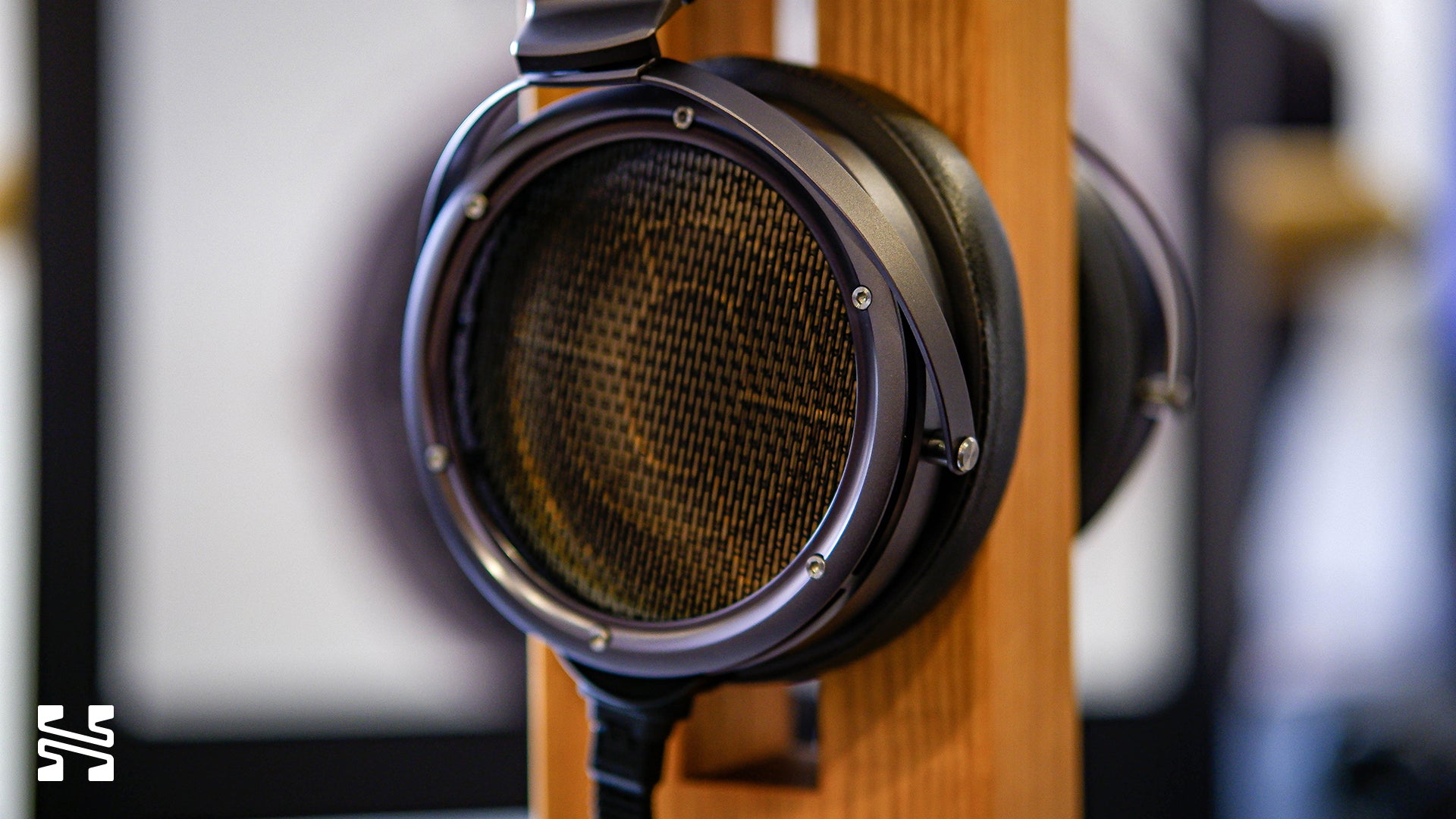
The X9000 was the star of the show and the one headphone I wanted to listen to the most after I learned it was there. It’s Stax’s recently released flagship headphone so obviously I had high expectations. As with the other headphones at the show, I wasn’t starstruck by it. I do think it’s the best headphone I heard at the show, however. It felt like a very complete package. Its sound is well rounded and there isn’t any one dimension which I could point out as being better than another. Like the Audeze CRBN, the traditional estat sound wasn’t too present on the X9000. Its low end was full and impactful while the X9000’s midrange tonality leans towards a pleasant, warm, and laid-back experience. However, it doesn’t eschew excitement in the treble where needed. The Stax booth let me play my own music and anything I threw at the X9000 was simply enjoyable. Soundstage, imaging, layering, and instrument separation were all effortless. Unfortunately, I couldn’t get a good handle on its resolution. While it certainly isn’t lacking, the noise of the crowd prevented me from seeing its upper limits. Now that I’m sitting down and writing this article, looking back it almost feels like the X9000 is the idealized form of what the Audeze CRBN was trying to be.
Build wise, the X9000 was a mostly premium experience, save for the slightly plasticky feeling headband adjustors. It cradles my head perfectly and practically disappears once it’s on. The sheepskin leather pads were soft and plush against my skin. Fit was not an issue whatsoever. It seems to me that the X9000 was engineered to really be a headphone you sit down with in an oversized chair for a lengthy listening session along with your favorite records and a glass of whisky in hand to wash the worries of the week away. Well, except for the pain of your wallet that is.

Conclusion
And that’s it. My very first taste of an audio show, the headphone part. Hopefully if you were looking at any of the headphones mentioned in this article, I’ve given you a bit of a glimpse of their capabilities. More importantly, I hope it gives you an idea of what the environment is like at a live show and what to expect if you ever manage to have a chance to attend one yourself. If you’re interested in speakers, stay tuned for the second installment of this article where I’ll cover what it was like as a total stranger to the world of high-end speakers and some of the key takeaways I had from that experience.


